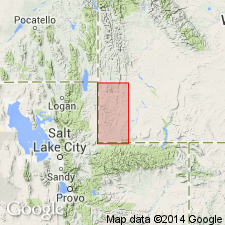
- Usage in publication:
-
- Almy formation*
- Modifications:
-
- Original reference
- Dominant lithology:
-
- Clay
- Sandstone
- Conglomerate
- AAPG geologic province:
-
- Green River basin
Summary:
Almy formation of Wasatch group. Yellow and reddish yellow sandy clays, with irregularly bedded sandstone and near base, conglomerate beds. Thickness 2,100 to 2,200 feet. Basal formation of Wasatch group. Underlies Fowkes formation and overlies Evanston formation ("Upper Laramie"). Named from Almy (a town a few mi north of Evanston), where it is exposed in bluffs along east side of Bear River, immediately overlying Evanston formation (white beds); see pl. 3, areal geol., scale 1:125,000. [Age is early Eocene.]
[Almy located near WY-UT State line, at mouth of Red Canyon, in sec. 30, T. 16 N., R. 120 W., approx. Lat. 41 deg. 20 min. 18 sec. N., Long. 111 deg. 00 min. 07 sec. W., eastern edge Murphy Ridge 7.5-min quadrangle, Uinta Co., southwestern WY.]
Source: Publication; US geologic names lexicon (USGS Bull. 896, p. 36).
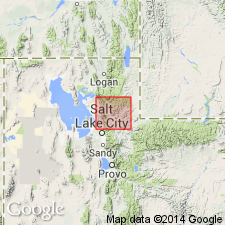
- Usage in publication:
-
- Almy conglomerate
- Modifications:
-
- Revised
- AAPG geologic province:
-
- Uinta uplift
- Wasatch uplift
Summary:
Pg. 824 (table 1), 842-844, pl. 1. Almy conglomerate of Wasatch group. In north-central Wasatch Mountains, includes (ascending) Pulpit conglomerate and Saw Mill conglomerate (both new). Thickness about 3,200 feet. Overlies Henefer formation (new); underlies Fowkes(?) formation. Age is Paleocene [middle Paleocene(?), Dragonian and Torrejonian]; included in Wasatch group, which is here given as middle Paleocene(?) to early Eocene (Wasatchian?).
[Notable exposures in lower Echo Canyon, in T. 3 N., R. 4 and 5 E., Summit Co., UT.]
Source: US geologic names lexicon (USGS Bull. 1200, p. 60-62); supplemental information from GNU records (USGS DDS-6; Denver GNULEX).
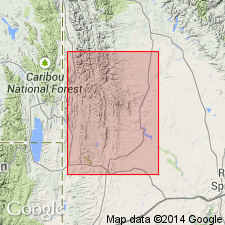
- Usage in publication:
-
- Almy Formation*
- Modifications:
-
- Areal extent
- AAPG geologic province:
-
- Green River basin
Summary:
Veatch's (1907) criteria for recognizing Evanston over most of its extent is valid, but extensive exposures mapped by authors in Cokeville, Kemmerer, and Sage quads, Lincoln Co, and in Big Piney quad, Sublette Co, WY in the Greater Green River basin and assigned to Evanston were called "Almy formation" by Veatch. Fossil vertebrates, mollusks, leaves, and pollen indicate a Late Cretaceous and Paleocene age.
Source: GNU records (USGS DDS-6; Denver GNULEX).
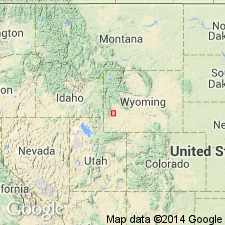
- Usage in publication:
-
- Almy Formation*
- Modifications:
-
- Not used
Summary:
Rocks assigned to parts of the Wasatch Formation in this report on Greater Green River basin of southwest WY were called Almy (Paleocene) and Knight (Eocene) Formations by Veatch (1907). Neither Almy nor Knight considered useful terms in this report [though neither name was abandoned].
Source: GNU records (USGS DDS-6; Denver GNULEX).
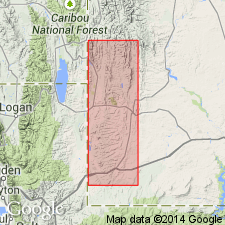
- Usage in publication:
-
- Almy Formation
- Modifications:
-
- Not used
- AAPG geologic province:
-
- Green River basin
Summary:
Rocks included in Almy Formation of Wasatch Group by Veatch (1907) are reallocated to the Wasatch Formation, and in places the Evanston Formation and Fowkes Formation.
Source: Publication.
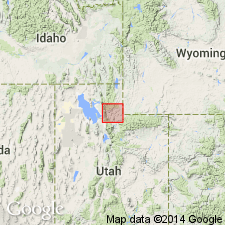
- Usage in publication:
-
- Almy Formation
- Modifications:
-
- Not used
Summary:
Eardley (1944) applied name Almy Formation differently in 3 parts of his map area. In lower Echo Canyon, Summit Co, UT on the Uinta uplift, his Pulpit Conglomerate of Almy is equivalent to the Echo Canyon Conglomerate of this report, and his Saw Mill Conglomerate of Almy is equivalent to the Evanston Formation of this report. At East Canyon Reservoir to the west his Almy is equivalent only to the Echo Canyon and in lower Lost Creek to the north, his Almy is equivalent to the Evanston and Knight Formations of this report. East Canyon Reservoir and Lost Creek are in Morgan Co, UT on the Wasatch uplift.
Source: GNU records (USGS DDS-6; Denver GNULEX).
For more information, please contact Nancy Stamm, Geologic Names Committee Secretary.
Asterisk (*) indicates published by U.S. Geological Survey authors.
"No current usage" (†) implies that a name has been abandoned or has fallen into disuse. Former usage and, if known, replacement name given in parentheses ( ).
Slash (/) indicates name conflicts with nomenclatural guidelines (CSN, 1933; ACSN, 1961, 1970; NACSN, 1983, 2005, 2021). May be explained within brackets ([ ]).

